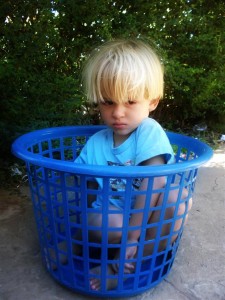 At our home there is a continual rotation of people. We have interns in and out pretty much all year round. Most of these people are temporary, staying anywhere from 2 weeks to 6 months with us. Just recently we had a young man, the brother of my brother in law, stay with us for a prolonged period of time. He recently left for school. He and my son had been quite close. My son had not shown much distress in the first couple of days or weeks of this young man leaving. In truth I thought he had pretty much forgotten all about him. Turns out I was in for a bit of a shock. A week ago we went to pick up a few new interns. When I returned home with them my son started asking for this young man. He quickly escalated from asking for him and then crying for him; very soon he was in a state of semi-hysteria. I was shocked. He was inconsolable. I ended up calling the young man on the phone and having my son talk to him. That did the trick. He calmed down and hasn’t asked for him since.
At our home there is a continual rotation of people. We have interns in and out pretty much all year round. Most of these people are temporary, staying anywhere from 2 weeks to 6 months with us. Just recently we had a young man, the brother of my brother in law, stay with us for a prolonged period of time. He recently left for school. He and my son had been quite close. My son had not shown much distress in the first couple of days or weeks of this young man leaving. In truth I thought he had pretty much forgotten all about him. Turns out I was in for a bit of a shock. A week ago we went to pick up a few new interns. When I returned home with them my son started asking for this young man. He quickly escalated from asking for him and then crying for him; very soon he was in a state of semi-hysteria. I was shocked. He was inconsolable. I ended up calling the young man on the phone and having my son talk to him. That did the trick. He calmed down and hasn’t asked for him since.
All this time I did not know that my son was dealing with grief in some way. I have spent this last week coming up with ways that my son is able to interact with the interns that are in our home and sharing our lives and yet creating healthy and firm boundaries.
My son is not at an age where he can understand why people are coming and going but I am able to create an atmosphere in which he can learn to attach himself to people and yet do so in a way that when they leave it will not bring on the large amounts of grief demonstrated earlier this week.
One of the biggest difficulties I have experienced with the interns is that they want to become close with my child even though they will not be staying for a long period of time. They want something more than just friendliness from my son. They want a firm attachment. I have recently had to step up and remind these young people that they will not be staying and that for the sake of my son it is good for them to be friendly and to enjoy each other but to create a deep bond is not with my child is not what they are here for. People love for children to be affectionate and most people even like it when a child expresses distress when they leave even though that child is not theirs, not realizing that their gratification is costing that child.
My job as I see it this summer is to help my son create healthy boundaries with people while still enjoying their company.
Jasmine is a co-housing, home birthing, missions minded, community living mama with a passion for fierce writing. She blogs.
Photo from: http://www.flickr.com/photos/vizzzual-dot-com/2226095398/




 In Part 1 of this two part
In Part 1 of this two part 


 But for the most part, we’ve not had to deal with “typical” toddler tantrums. By typical, I mean the ones harried veteran parents always stop to warn you about when they see you cuddling a sweet, drool-soaked little bundle of baby chub in the supermarket. And you would smile and nod sympathetically, edging closer to the clerk (because the parent’s wild eyes and twitchy left nostril are making you nervous) all the while knowing that your child will never be “typical.”
But for the most part, we’ve not had to deal with “typical” toddler tantrums. By typical, I mean the ones harried veteran parents always stop to warn you about when they see you cuddling a sweet, drool-soaked little bundle of baby chub in the supermarket. And you would smile and nod sympathetically, edging closer to the clerk (because the parent’s wild eyes and twitchy left nostril are making you nervous) all the while knowing that your child will never be “typical.”










